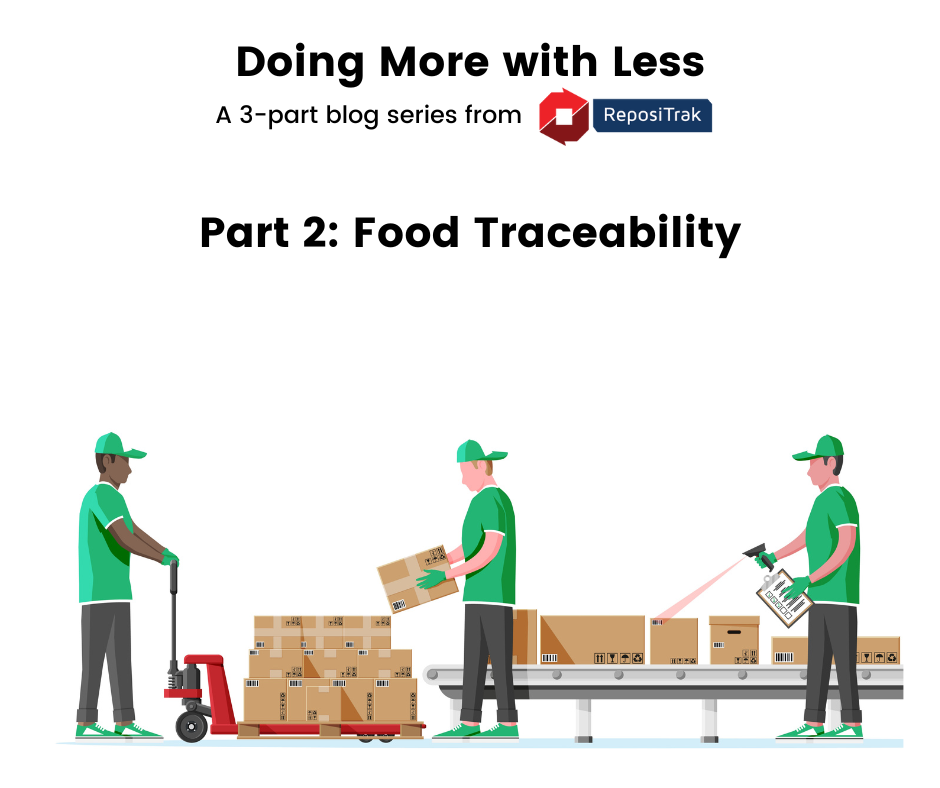Food Traceability
Labor shortages and cost increases are affecting every node of the post-COVID food supply chain industry. With job vacancy rates in the retail trade topping 1 million open positions, suppliers, retailers and wholesalers are looking for solutions that allow operations to continue, even when shifts are left unfilled.
If the past 24 months have taught us anything, it’s that we’re operating in a landscape that’s exceedingly unpredictable and agility is king. According to Deloitte’s 2022 Retail Industry Outlook, “retailers have been forced to reexamine their legacy systems and strategies that have shaped the industry for years.” But when looking to recalibrate, the latest tech solution isn’t always the answer. The solutions that last are the ones that address specific business goals, lighten the load on your workforce and bring efficiencies to your daily operations.
This is Part 2 of a 3-part series exploring proven solutions to maximize the efficiency of day-to-day food supply chain operations.
Food Traceability
Traceability is a hot topic now because in November 2022, the FDA plans to implement its long-awaited FSMA section 204 regulation. Any company that manufactures, processes, packs or holds the thousands of foods from the Food Traceability List (FTL) will be required to track each product’s electronic pedigree through each point in its journey.
There are many benefits to adopting traceability practices including faster recalls and avoiding the implications of non-compliance with FSMA 204. Having a track and trace process in place will enable greater transparency with customers, suppliers and consumers alike. Forbes recently reported a “significant disconnect between senior retail leaders and consumers” when it comes to transparency in sustainability practices. Consumers want to know where products come from and feel good about their purchases, and they’re also willing to spend more for sustainable products. Senior leadership should take note.
A common misconception is that tracking product requires more labeling and scanning steps, especially at those junctures in the food supply chain where product is transformed or changes hand. But a true, technology-driven track and trace process requires no additional steps. Adding manual processes like labeling and scanning could add tens – or even hundreds – of thousands of dollars to your operating expense. Using electronic tracking is not only more affordable, it also has less of an impact on costs that are typically passed on to customers and consumers. It’s easier to implement and because there are no additional steps, it requires less change-management for the people responsible.
Having food traceability information at-the-ready can unlock other possibilities beyond transparency and compliance with FDA’s requirements. It can actually help with food waste management initiatives. ReposiTrak has the ability to include expiration and sell-by dates as part of the string of information it collects and stores as part of the Key Data Element (KDE) creation process. With this added data point, it is possible to visualize what products are at risk of going out-of-date, identify trends in excess ordering or shrink, and more.
Whether the motivating factor for your organization is FDA compliance, transparency or waste reduction, cost savings are possible through the ReposiTrak Traceability Network. Our platform uses proprietary technology to connect a product’s path to the consumer through a common thread with no additional labeling and scanning steps, and therefore no added labor. We’ve worked with top trade groups and leading retailers to develop a system that exceeds the FSMA section 204 requirements at the lowest cost possible.
Don’t Miss:
Part 1: Compliance Management
Part 3: Supply Chain Solutions

